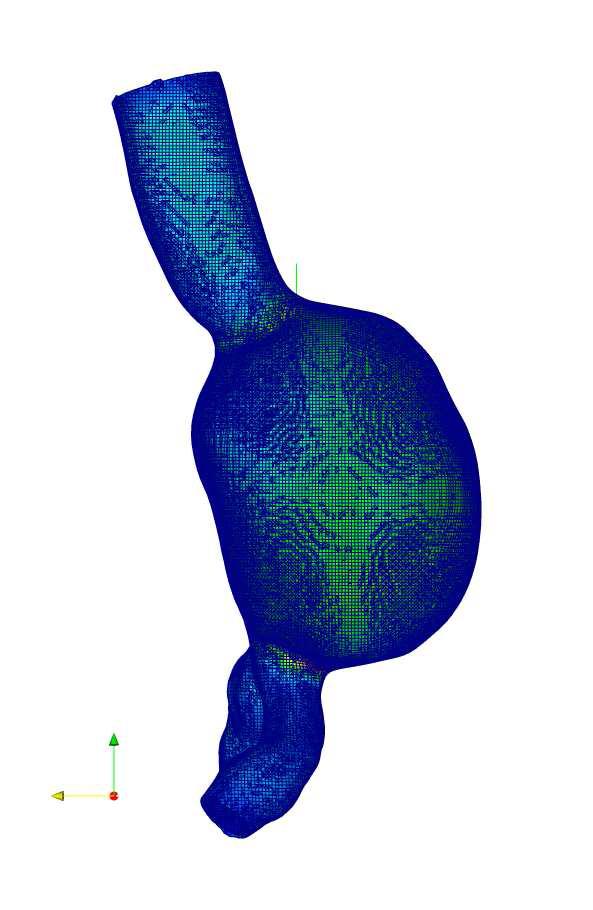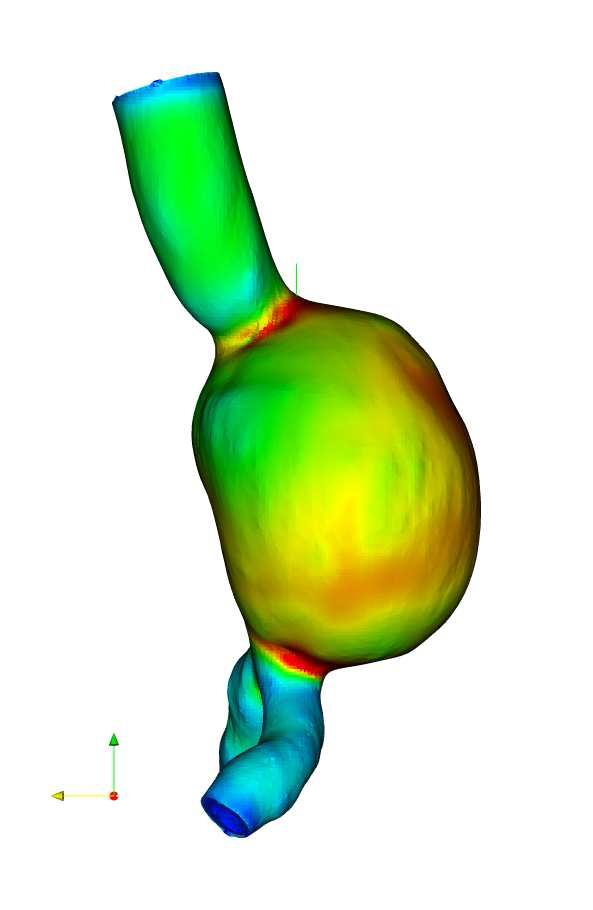 |
case study | medical |
Harpoon helps save lives: assessing aneurysm rupture risk by Lisa Cooper Abdominal aortic aneurysms are the tenth biggest killer in the western world, with over 80% of those who suffer a ruptured aneurysm dying before they reach hospital. Even if the patient does receive treatment, the mortality rate remains very high. Until now there has been no way of assessing the risk of aneurysm rupture on a case-by-case basis, a process that has the potential both to save a great number of lives and also to prevent numerous patients from undergoing unnecessary surgery. A healthy aorta – the artery that carries blood pumped from the heart to the body’s organs – is around 1.5 to 2.5cm in diameter. Anything above 3cm is considered an aneurysm and is at risk of rupture, as the bulging section of the aortic wall is weakened and may be unable to withstand the pressure of the blood inside. Large aneurysms are treated by vascular surgery, a major and highly affecting procedure, which is undertaken when a patient’s aneurysm exceeds a diameter of 5 or 5.5cm. However, this is a rough criterion and fails to take into account the risk to the individual patient. Not all aneurysms rupture – many develop and then remain stable afterwards. For the last eighteen months researchers at the Institute for Computational Mechanics in Munich, Germany, have been trying to determine the risk of rupture to individual patients. This is achieved by investigating the patient’s aneurysm geometry using finite element simulations, which will enable them to determine the local stress distribution within the aneurysm. Their ultimate goal is to develop a medical tool to allow clinicians to undertake a statistically significant study, which could then be used to assess individual patients’ risk. Before the mechanical behaviour of the aneurysm can undergo simulation, a vital first step is to create a mesh of the patient-specific geometry. This is determined from CT data, smoothed and exported in an .stl file. But meshing the complex geometries created from segmentation of medical data is no easy matter. “Firstly, the geometry is naturally complex, being from the human body,” says the institute’s Dr Andrew Comerford. “Furthermore,” he continues, “the resulting geometries have very thin regions and very thick regions. This means the mesher must be able to mesh to different scales while preserving the quality.” An additional issue is that the geometries contain up to ten separate volumes and the mesh must match at the interface between these different volumes. The meshing software used by Dr Comerford and his team is Harpoon, the extreme mesher developed by Manchester-based Sharc. “With Harpoon, the above-mentioned points are all achieved with relative simplicity,” he says. The software allows easy creation of hex dominant meshes on complex geometries, on which the simulation performs much better than on the usual tetrahedral meshes. Another feature of Harpoon that Comerford and his team are particularly enthusiastic about is its boundary layer meshing. This is used to create very smooth surfaces, which is particularly important because pressure is applied orthogonal to the surface. And if fluid flow or fluid solid interaction (FSI) simulations are to be performed, the boundary between the solid and fluid must be very well resolved, which can only be achieved using the boundary layer feature. Previous projects at the Institute for Computational Mechanics had trialled other meshing software, but it was clear from these trials that Harpoon was the only solution capable of producing quality meshes in an efficient timescale for complex geometries. An additional advantage for the Institute is Harpoon’s native support of the .stl file format and its ability to fix the geometry. “This makes it the ideal software for meshing medical related geometries,” says Dr Comerford. Indeed, Harpoon is now used extensively at the Institute for many medical related projects. The simplicity of its interface makes the software very intuitive, which means it is easy to get started even for those who have never used it before. And Dr Comerford rates the support he has received from software developers Sharc as excellent. “Whenever there is a problem, they are extremely quick to respond and always help to find a solution. They take a genuine interest in the projects being undertaken.”
|
Segmented abdominal aortic aneurysm with harpoon mesh overlain. Example stress results, regions of high stress indicate potential rapture locations, hence could be useful in clinical application for assessing rapture risk.
|


